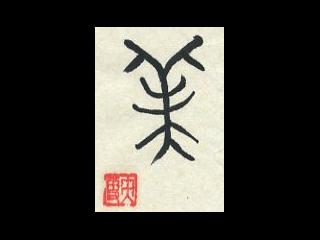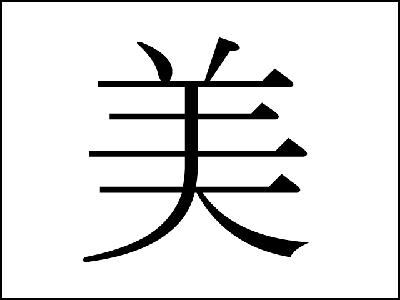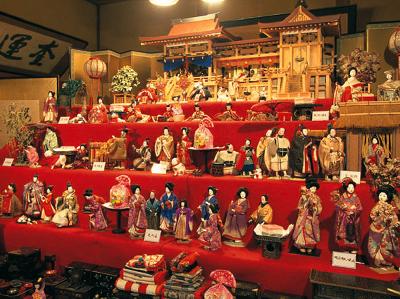|
The character 羊 shows the form of a 'sheep.' It can often be seen as an element in Kanji. The reason for this is that in antiquity sheep were often used in rites. 'Sheep' stands out among Kanji with abstract meanings like 善 'good,' 美 'beauty,' and 義 'justice.' The character 'bi' 美 ('beauty') shows the whole body of a sheep. While 羊 shows the upper part of a sheep including the horns, in 美, its lower body including the hind legs are added. A person who possessed sheep was already considerably wealthy.
In the world of polytheism one tries to receive the favor of gods by beautiful and precious offerings. It was believed that offering a dog to the highest god was most effective. Offers to receive godly favor became especially important at the time of trials. As trials took the form of an ordeal by the gods, both parties submitted a sheep to be variously tested by the gods.
The origin of Shirakawa Kanji science follows the idea that characters were formed and developed as a means of communication between gods and man. From this standpoint, beauty has to be acceptable to the gods, or warranted by the gods. Interestingly, the Biblical idea of offering a sheep to God can also be found in Gospel St John 1, 29 and I Corinthians 1, 7.
In the world of polytheism one tries to receive the favor of gods by beautiful and precious offerings. It was believed that offering a dog to the highest god was most effective. Offers to receive godly favor became especially important at the time of trials. As trials took the form of an ordeal by the gods, both parties submitted a sheep to be variously tested by the gods.
The origin of Shirakawa Kanji science follows the idea that characters were formed and developed as a means of communication between gods and man. From this standpoint, beauty has to be acceptable to the gods, or warranted by the gods. Interestingly, the Biblical idea of offering a sheep to God can also be found in Gospel St John 1, 29 and I Corinthians 1, 7.
| [+ADDRESS] | 
|















